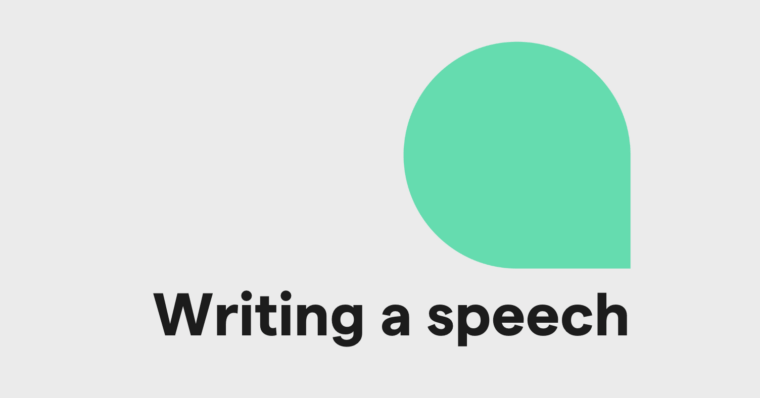
- “Nice to meet you” is a pleasant and familiar way to greet someone for the first time over email.
- Use “Nice to meet you” in a professional email to introduce yourself to colleagues and clients or to respond if they reach out to you first.
- “Nice to meet you” is a commonly used greeting, but there are various other ways to express this sentiment.
- Refine your email greeting to be more impactful with phrases like “It’s a pleasure to meet you,” “It’s great to connect with you,” or “Thanks for the introduction.”
- Writing “Nice to e-meet you” in an email is considered outdated and unnecessary.
Greeting someone professionally with “Nice to meet you” can help make a good first impression and establish a friendly tone. But it’s also enough of a cliché that you may want to consider alternatives to this phrase, especially when the stakes are higher.
Below, we’ll discuss the basics of a “Nice to meet you” email and explore other ways to convey the same sentiment more creatively.
Table of contents
What is a “Nice to meet you” email?
Is it professional to say, “Nice to meet you”?
Should you say, “Nice to e-meet you”?
What is a “Nice to meet you” email?
A “Nice to meet you” email is a message to new contacts explaining who you are and why you’re reaching out, even if that reason is just to say “Hello” for the first time. When used professionally, sending a “Nice to meet you” email is an appropriate way to introduce yourself or to respond if someone reaches out to you first.
Sending a “Nice to meet you” email can also be helpful when requesting an initial meeting, reaching out to a potential new client, responding to a recruiter, or introducing yourself to someone with mutual contacts.
Is it professional to say, “Nice to meet you”?
There’s nothing wrong with saying, “Nice to meet you” in a professional email. It’s one of those social pleasantries that we barely notice when it’s there. And yet, it adds a dash of politeness and cordial tone to your email message.
Telling new contacts you’re happy to meet them is friendly but not strictly necessary. You may find that some new contacts prefer you to get right to the point. However, the key to using this social nicety lies in the context of your email. Even if your email is strictly business, bypassing “Nice to meet you” could make your message sound too abrupt.
Should you use exclamation points in professional email greetings?
Using exclamation points in professional emails depends on what, where, and to whom you’re writing. If you’re happy to meet someone over email, it’s appropriate to add an exclamation point, such as “Nice to meet you!” or “Thanks for reaching out!” Exclamation points in this context can help express your excitement and relieve the pressure of meeting new work contacts.
It’s best to save exclamation points for less formal sentiments. If you use exclamation points when trying to conduct a serious conversation over email, your contact might think you’re unhappy with them.
Should you say, “Nice to e-meet you”?
Some may argue otherwise, but it’s best to avoid the phrase “Nice to e-meet you.” Connecting with new contacts via email is commonplace nowadays, especially with many organizations embracing a hybrid work model.
When you connect with someone for the first time via email, it can feel strange to say, “Nice to meet you.” After all, you’re not exactly shaking hands and making eye contact. That’s why you’ll often see colleagues or clients using “Nice to e-meet you” or “Nice to virtually meet you.” Although it’s a polite and friendly greeting, acknowledging that the meeting occurs online feels unnecessary and even a little old-fashioned.
So, should you acknowledge that it’s an online meeting rather than in person? We recommend skipping the “e-meet” and “virtual” references. We live and work in a digital world, and there are other ways to establish a personal connection over email without using these references.
5 “Nice to meet you” synonyms
A synonym is a word or phrase with the same (or nearly the same) meaning as another word or phrase. While some of the alternatives below don’t necessarily have precisely the same meaning as “Nice to meet you,” they can communicate a similar intention with more creativity.
1 “It’s a pleasure to meet you.”
This greeting communicates that you’re happy to meet someone. Use it in any professional setting where you want your introduction to sound cordial and respectful. It’s polite and appropriately formal, especially when meeting for the first time.
Other ways to say “It’s a pleasure to meet you” include:
- “Pleased to meet you.”
- “Happy to meet you.”
- “Delighted to make your acquaintance.”
2 “It’s great to connect with you.”
This informal yet professional greeting works well for a digital or remote meeting and can be an excellent alternative to “Nice to e-meet you.”
“It’s great to connect with you” acknowledges that you’re speaking for the first time while inviting the reader to share an ongoing mutual connection. That makes it ideal for networking purposes and can help establish the potential for future communication and collaboration.
Some variations of “It’s great to connect with you” include:
- “It’s great connecting with you.”
- “I’m happy to connect with you.”
- “I’m glad we could link up.”
3 “I’ve heard great things about you.”
When your new contact’s reputation precedes them (in a good way), it never hurts to let them know you’re aware. We all like to be recognized for our work, and acknowledging the other person’s skills or achievements can help start the conversation positively.
In other words, you’re offering a degree of validation by saying, “I see you.” If you know specifics about their impressive experience, share some of them. It’ll make your email seem more personal.
You can also communicate that you anticipate working together based on their reputation by saying, “I’ve been looking forward to meeting you.”
Alternatives to “I’ve heard great things about you” include:
- “I’ve been looking forward to meeting you.”
- “I’m delighted we’re getting in touch.”
- “I’m thrilled to meet you at last.”
4 “Thanks for the introduction.”
This greeting serves dual purposes. Use it when someone introduces you to a new contact or as a response when someone introduces themselves. It’s also handy for new client introductions or follow-ups.
In this context, leading with “Thank you” can strike the right tone for a future professional relationship. Expressing gratitude can also enhance social bonding, which is always a good thing when trying to make new connections.
Alternatives to “Thanks for the introduction” include:
- “Thanks for connecting with me.”
- “I appreciate you reaching out.”
- “I’m glad we were introduced.”
If you’re emailing someone without a previous introduction, you can say, “I’m pleased to introduce myself,” or “Please allow me the opportunity to introduce myself.”
5 “I’m looking forward to working with you.”
A greeting that expresses excitement about an upcoming partnership can go a long way toward forging a bond from the start and relieving the stress of meeting new work contacts.
If you’re excited about establishing a new professional relationship with someone, it doesn’t hurt to say so with a greeting like “I’m looking forward to working with you.” Feel free to follow your greeting with some reasons you eagerly anticipate working together.
Other ways to say “I’m looking forward to working with you” include:
- “I’ve been looking forward to meeting you.”
- “I’m excited about working together.”
- “I’m thrilled to team up with you.”
Remember, there’s nothing wrong with simply saying “Nice to meet you” in an email. But, if you want to personalize your email further, there are many other ways to approach a professional greeting.






